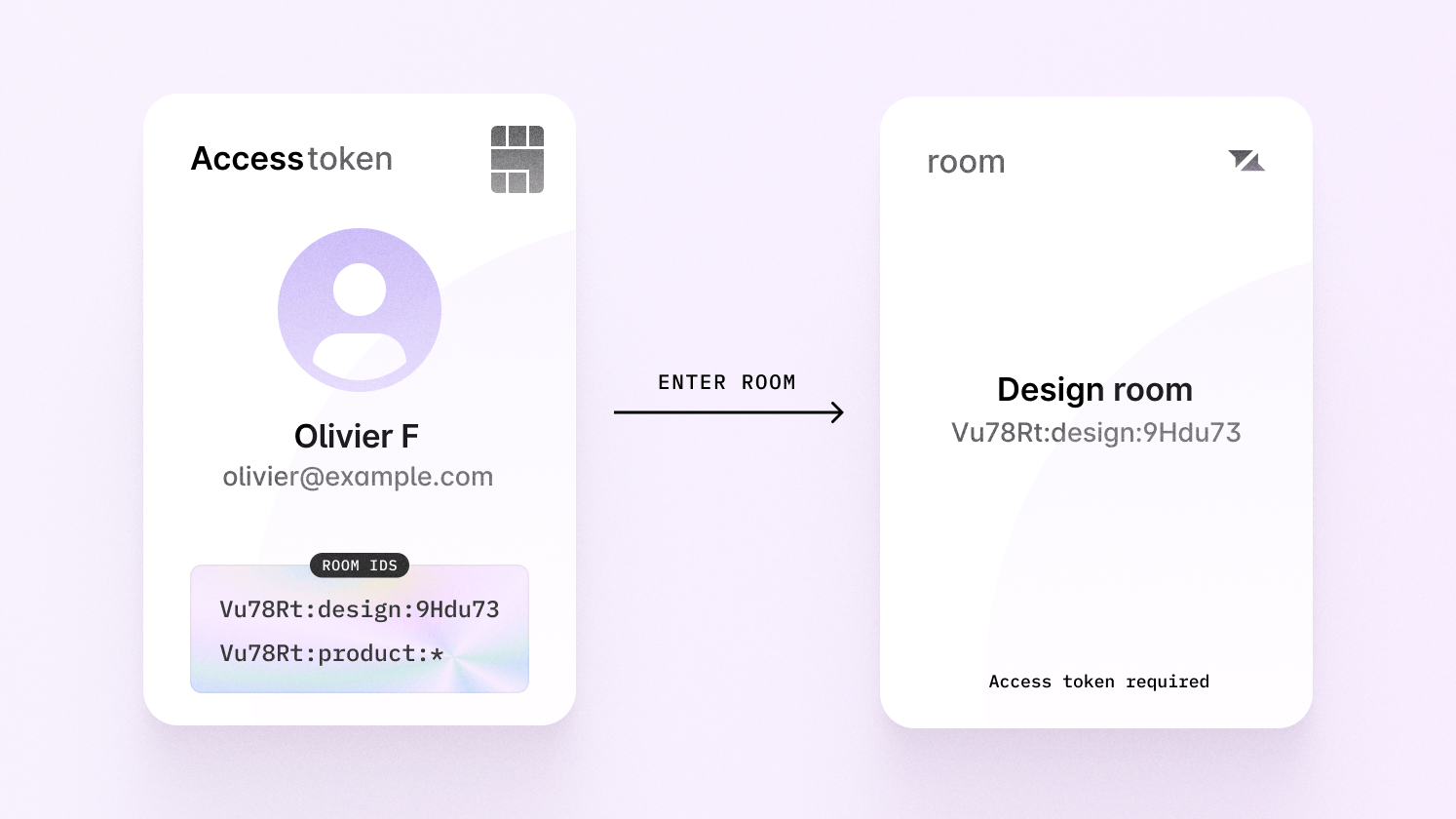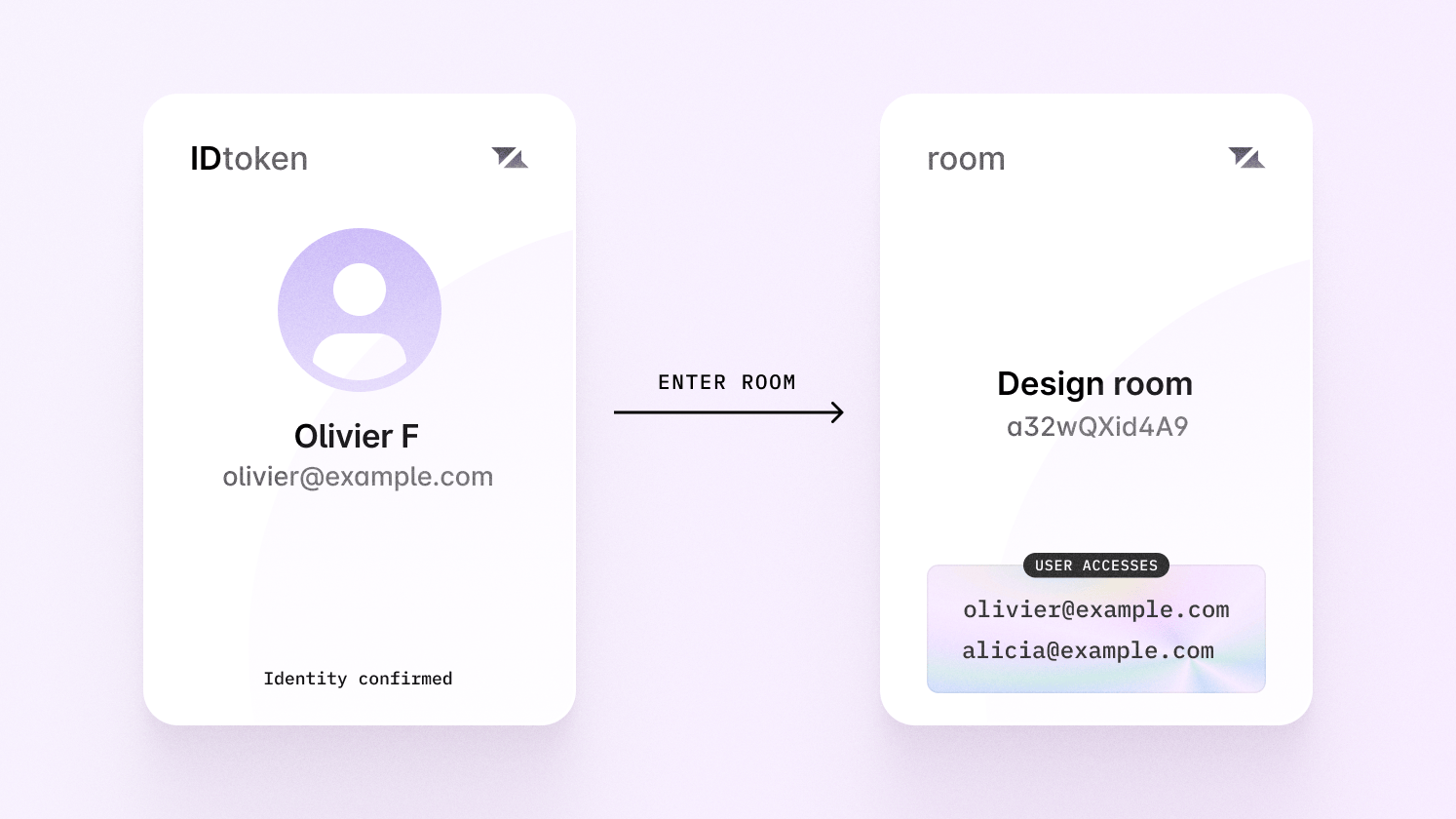Liveblocks 1.11: Authentication updates and Comments improvements
Today, we're updating our authentication recommendations and making various Comments improvements. We're also making improvements to Yjs subdocuments and introducing a way to rename your room IDs.

With Liveblocks 1.11, we’re updating our authentication recommendations, in aid of helping you build scalable applications as easily as possible. This update also includes a number of small improvements and additions to Comments, refinements for Yjs subdocuments, and a way to rename your existing room IDs.
Upgrade now
Start using the new features now by updating each Liveblocks package in your
project to the @latest version.
There are no breaking changes in Liveblocks 1.11.
Authentication recommendations
Authentication is imperative for securing your application, and Liveblocks provides this through two different methods, allowing you to authorize and grant permissions to your users. We’ve taken some time to update our documentation, as we’d like to be crystal clear about choosing the correct authentication method for your application.
Overview
The two methods we provide are access token authentication and ID token authentication.
Access tokens
Access token authentication allows you to handle permissions yourself. It’s best for prototyping, and is great if you need only simple permissions. We always recommend using a naming pattern when granting access.

If you’re using
liveblocks.prepareSession
in your application, that means you’re using access tokens.
ID tokens
ID token authentication allows you to set complex room permissions for different groups and users, and Liveblocks will check the permissions for you. This is best for apps that use share menus, such as those in Google Docs or Figma.

If you’re using
liveblocks.identifyUser in
your application, that means you’re using ID tokens.
Public key
If you’re using your public API key in production, we also recommend switching over to your secret API key instead. Your public key makes it possible for end users to access any room’s data, and if your application has permissions, this should be avoided.
You can tell if you’re using your public key by checking
createClient in
your config file. It’s still okay to use your public key on public pages that
require no permissions.
Learn more
To learn more about any of our new authentication recommendations, see our rewritten authentication documentation.
Comments improvements
In Liveblocks 1.11, we’re making a number of improvements to Comments, mostly related to user experience.
Scroll into view
The default Comments components will now scroll into view, and be highlighted, when a Notification is clicked.
A comment scrolling into view when a notification is clicked.
This works by checking if the current page’s URL contains a comment’s ID hash
which Notifications automatically adds for you. However, you can also use this
feature yourself by manually adding the hash, for example with #cm_b26Gr7...:
Scroll into view is enabled by default, but you can disable it by passing a
scrollOnLoad option to
useThreads.
Mark as read
The
InboxNotification
default component now offers a dropdown menu allowing you to mark a notification
as read.
Alongside this addition, we’ve also improved the UI of the component, making it easier to use at particularly narrow widths.
Notifications example
We’ve built a minimal Notifications example for Comments which is a great starting place to learn how to add a notifications inbox to your application.
Highlights of the new notifications example’s interface.
You can find the code, and a live demo, in our examples gallery.
Yjs subdocument refinements
Liveblocks Yjs allows you to create subdocuments, which are
essentially Yjs documents that are nested inside each other. We’ve refined the
way subdocuments can be accessed in our
@liveblocks/node package, and written a
new guide that takes you through how to use them.
New methods
In this update, we’re changing
liveblocks.getYjsAsBinaryUpdate
and
liveblocks.sendYjsBinaryUpdate
to support subdocuments. These functions allow you to fetch and edit Yjs
subdocuments on the server without connecting via WebSockets.
New guide
To learn how to use subdocuments on both client & server, and when to use them, make sure to read our detailed new guide on subdocuments.
Rename Room IDs
It’s now possible to change the ID of any existing room, a feature that is
particularly helpful if you’re switching to an access token
naming pattern. You can do
this by using
liveblocks.updateRoomId
or our new
update room ID REST API.
To implement this, make sure to read our guide on migrating your room IDs, as we explain how to smoothly transition users that are currently connected.
Upgrade
There are no breaking changes in this update, and you can start using the new
features now. Update every Liveblocks package in your project to the @latest
version to get started.
If you’d like to add Comments to your application, make sure to check out our guides and examples.
Contributors
Huge thanks to everyone who contributed, and specifically to Adrien Gaudon, Florent Lefebvre, Guillaume Salles, Marc Bouchenoire, Nimesh Nayaju, Olivier Foucherot for their work on Comments and Notifications. Keep checking the changelog for the full release notes—see you next time!
Ready to get started?
Join thousands of companies using Liveblocks ready‑made collaborative features to drive growth in their products.


